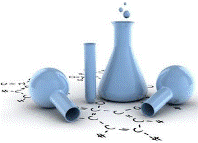Chemical and Biomolecular Engineering, Department of
Date of this Version
2012
Document Type
Article
Citation
Int J Biochem Cell Biol. 2012 August ; 44(8): 1331–1336.
Abstract
A variety of mechanotransduction pathways mediate the response of fibroblasts or chondrocytes to ultrasound stimulation. In addition, regulatory pathways that co-ordinate stimulus-specific cellular responses are likely to exist. In this study, analysis was confined to the hypothesis that ultrasound stimulation (US) influences the chromatin structure, and that these changes may reflect a regulatory pathway that connects nuclear architecture, chromatin structure and gene expression. Murine fibroblasts seeded on tissue culture plates were stimulated with US (5.0 MHz (14 kPa), 51- s per application) and the thermal denaturation profiles of nuclei isolated from fibroblasts were assessed by dynamic scanning calorimetry (DSC). When compared to the thermal profiles obtained from the nuclei of non-stimulated cells, the nuclei obtained from stimulated cells showed a change in peak profiles and peak areas, which is indicative of chromatin remodeling. Independently, US was also observed to impact the histone (H1):chromatin association as measured indirectly by DAPI staining. Based on our work, it appears plausible that US can produce a remodeling of chromatin, thus triggering signal cascade and other intracellular mechanisms.



Comments
Copyright 2012 Noriega et al.